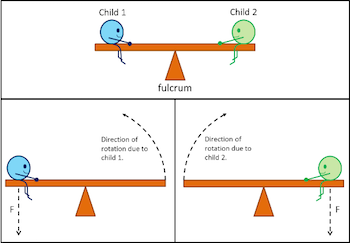Understanding the Importance of Torque for NEET and IIT Aspirants
- TARUN SIR
- Jul 1, 2024
- 3 min read

Introduction
When preparing for competitive exams like NEET and IIT, understanding various physics concepts is crucial. One such concept that often puzzles students is torque. In this article, we will dive deep into what torque is, its significance in NEET and IIT exams, and why mastering this concept is essential for aspirants.
What is Torque?

Torque, often referred to as the moment of force, is a measure of the rotational force applied to an object. Imagine trying to open a door. The ease with which you can open it depends on where you apply the force. This is torque in action. In simpler terms, torque is the twisting force that causes rotation.
The Science Behind Torque

Torque can be calculated using the formula:
Torque=Force×Lever Arm Distance\text{Torque} = \text{Force} \times \text{Lever Arm Distance}Torque=Force×Lever Arm Distance
Where:
Force is the push or pull applied.
Lever Arm Distance is the distance from the pivot point to the point where the force is applied.
The unit of torque is Newton-meter (Nm).
Applications of Torque in Real Life

Torque is not just a theoretical concept; it has practical applications in our daily lives:
Opening a Door: The farther you are from the hinges, the easier it is to open the door.
Using a Wrench: Mechanics use long wrenches to apply greater torque and loosen tight bolts.
Bicycle Pedals: The force applied to the pedals is transferred to the wheels, making the bicycle move.
Torque in NEET and IIT Exams
In both NEET and IIT exams, physics plays a crucial role. Torque, being a fundamental concept, often appears in various forms:
Direct Questions: Calculating torque given force and distance.
Conceptual Questions: Understanding the effect of changing the point of application of force.
Practical Applications: Problems involving real-life scenarios like pulleys, levers, and gears.
Why Understanding Torque is Crucial

Understanding torque is not just about passing exams. It helps in developing a deeper understanding of physics and its applications. This knowledge can be particularly useful in engineering fields, where rotational forces and mechanical systems are prevalent.
How Torque Questions Appear in Exams

Torque-related questions can be straightforward or complex, often integrated with other physics concepts. Examples include:
Simple Calculations: Find the torque produced by a given force at a certain distance.
Combined Concepts: Questions involving torque along with linear motion, equilibrium, and rotational dynamics.
Real-life Applications: Situations where students need to apply their understanding of torque to solve practical problems.
Tips to Master Torque Concepts

Understand the Basics: Ensure you have a strong grasp of basic physics concepts.
Visualize the Problem: Drawing diagrams can help visualize how forces and distances interact.
Practice Regularly: Consistent practice with a variety of problems is key.
Use Mnemonics: Create memory aids to remember formulas and concepts.
Study with Peers: Group studies can provide new insights and explanations.
Common Mistakes to Avoid

Ignoring Units: Always include units in your calculations.
Forgetting the Direction: Torque has direction, and it's crucial to consider it in problems.
Overlooking Lever Arm Distance: Ensure accurate measurement from the pivot point.
Misapplying Formulas: Double-check which formula is appropriate for the problem.
Practice Problems on Torque

Calculate the torque produced by a 10 N force applied 2 meters from the pivot point.
A door is 1.5 meters wide. If a force of 5 N is applied at the edge, what is the torque about the hinges?
Find the torque when a force of 15 N is applied at an angle of 45 degrees, 1 meter from the pivot.
Conclusion
Mastering torque is essential for NEET and IIT aspirants. It not only helps in scoring well in exams but also lays a strong foundation for understanding advanced physics concepts. By grasping the basics, practicing regularly, and avoiding common mistakes, students can excel in this area.
FAQs
1. What is the basic formula for calculating torque? The basic formula for calculating torque is Torque=Force×Lever Arm Distance\text{Torque} = \text{Force} \times \text{Lever Arm Distance}Torque=Force×Lever Arm Distance.
2. Why is torque important in NEET and IIT exams? Torque is a fundamental concept in physics that often appears in exam questions, testing students' understanding of rotational forces and mechanical systems.
3. How can I improve my understanding of torque? Improving your understanding of torque involves studying the basics, visualizing problems, practicing regularly, and using additional resources like textbooks and online tutorials.
4. What are some common mistakes students make with torque problems? Common mistakes include ignoring units, forgetting the direction of torque, overlooking the lever arm distance, and misapplying formulas.
5. Can you recommend any resources for studying torque? Recommended resources include H.C. Verma's "Concepts of Physics," online tutorials from Khan Academy, practice books with solved problems, and study groups for collaborative learning.
Comments